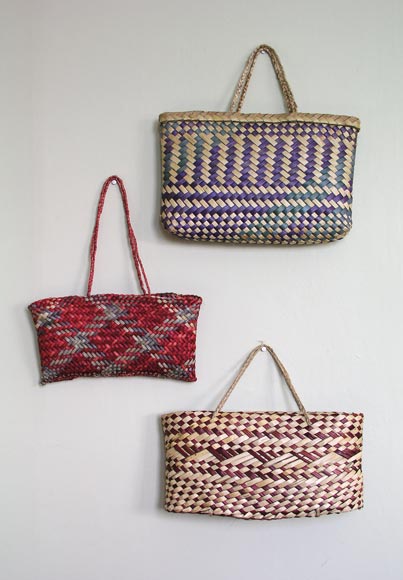
Flax kete (baskets) had many uses and are still a popular alternative to a tote bag. The flax in these modern baskets is brilliantly dyed. Strips of leaves are woven by a technique known as ‘raranga’ to form the kete. This technique is also used to produce other articles such as floor mats and belts. Although New Zealand flax is the most common material because of its durability, the leaves of other plants such as kiekie and pīngao are also used. Patterns that symbolise elements of nature are often woven into kete and other items. These patterns are carefully protected within many iwi (tribes), and handed down the generations.
Te whakamahi i tēnei tūemi
Te Ara - The Encyclopedia of New Zealand
Photograph by Leanne Tamaki
This item has been provided for private study purposes (such as school projects, family and local history research) and any published reproduction (print or electronic) may infringe copyright law. It is the responsibility of the user of any material to obtain clearance from the copyright holder.








Tāpiritia te tākupu hou